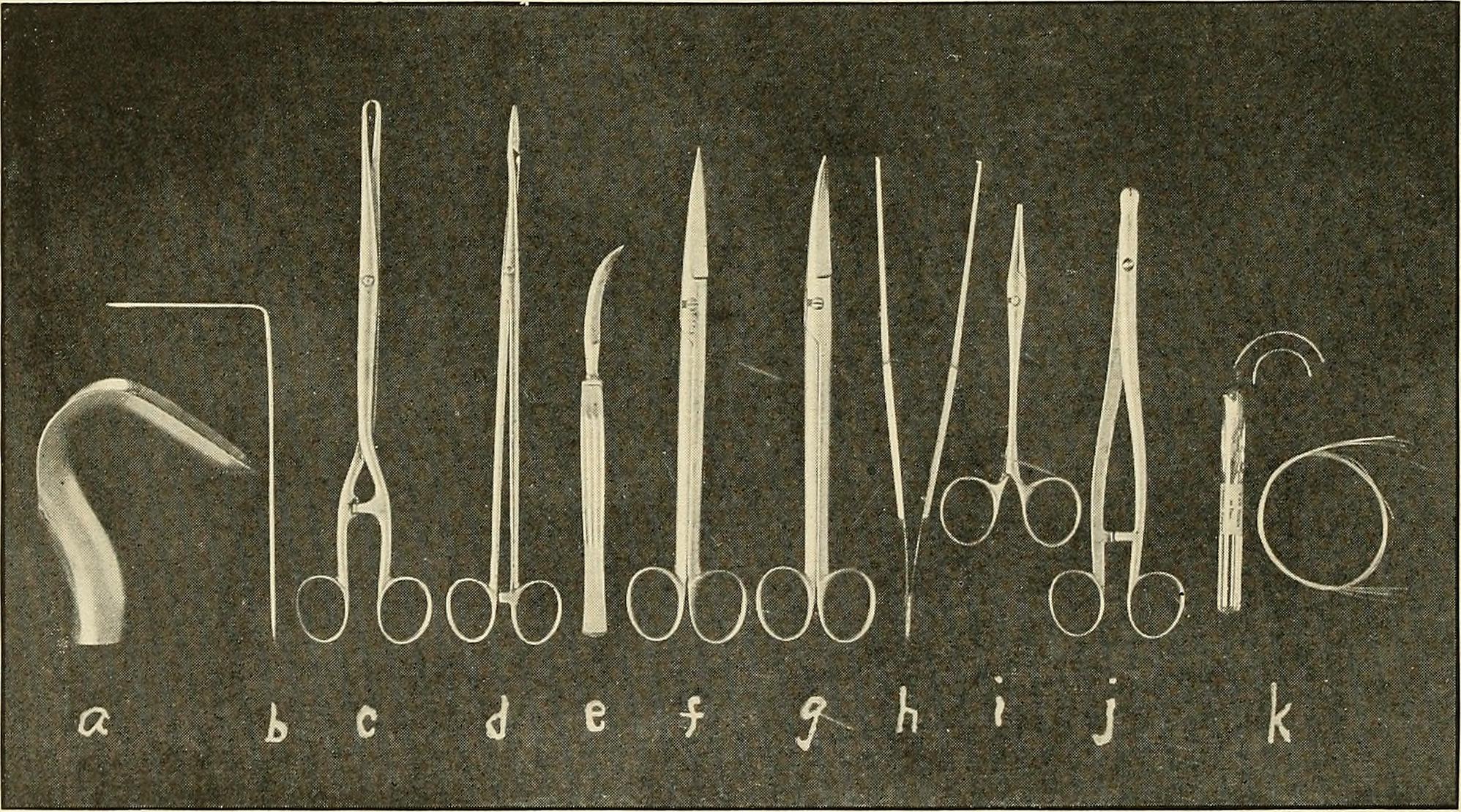 Image from "The Diagnosis and Treatment of Diseases of Women," 1907. The Internet Archive Book Images, via Flickr.
Image from "The Diagnosis and Treatment of Diseases of Women," 1907. The Internet Archive Book Images, via Flickr. Yoko Ono is dressed beautifully, and the first women to approach know exactly which pieces of her clothing they will remove. The very first goes for a slice of sleeve, cutting vertically from Ono’s wrist up her forearm, taking a slip of fabric roughly the length and shape of a hot dog. The second snips a piece of her cardigan’s collar detail. The third takes a bit of the placket to which a line of glinting buttons are sewn; she walks away clutching a pearl. They each move precisely, an edge of delicate rapaciousness to the way they maneuver the shears.
It is 1965 and as part of an evening of performance art at New York City’s Carnegie Hall, Ono has invited viewer-participants to come onstage and cut her clothing off her body. She calls the performance “Cut Piece.” In the days after the repeal of Roe vs. Wade, I watch and rewatch a short film of one of the four performances. Onstage, Ono’s face is a mask of impassivity. She looks serene, almost smirking as she kneels in her well-tailored black skirt. I watch her breathing: breath as a conscious, controlled choice rather than mere reflex.
Those first three women to climb onstage with her are authoritative, directed, leaning close to Ono’s body to cut away her clothes. After that, men begin to file up. Walking across the stage, they saunter, stride, hesitate. They glance back toward the audience — to friends? To see who was watching them, and how? I see little self-consciousness in their movements. Most slice roughly. The audience chatters.
Ono called these event programs a “Strip-tease Show”: a “stripping of the mind.” The programs also included a performance that resembled an enormous game of “telephone” (“Word Of Mouth Piece”) and another that saw audience members lying on top of one another, listening for each other’s heartbeat (“Beat Piece”). The first time Ono performed “Cut Piece,” in Tokyo, participants cut her clothing in a mode of reverence, she said. Ragged clothing read differently in post-Hiroshima Japan.
In Carnegie Hall, though, something seems to shift. One man slices a V of fabric from the hem of her skirt up toward her crotch. Another roughly grabs a handful of cardigan in front of her breast and slices a hole just in front of her nipple. Ono’s head jerks down and her eyes drift away as yet another man approaches, pulls her cardigan away from her stomach, cuts off a piece.
Other women approach. One decorates her cutting with artistry, turning the cardigan into a boatneck, pulling the fabric away from Ono’s throat with precision. A man leans away as he slices down the sweater’s arm, then sets the scissors down far from Ono’s body. There are moments of concordance, or complicity, when Ono’s face appears to appreciate the variegated intimacy she has set into motion. Participants cut so close to Ono’s body and walk away with treasure, a swatch of fabric they might hang on the wall forever. Twenty years after twelve-year-old Ono watched American airplanes bomb Tokyo into a carpet of fire, this work represents the body as “recipient of risks and threats, but also as a gift,” as art historian Julia Bryan-Wilson wrote.
A man in a neatly pressed white shirt approaches. By this point, Ono wears a sliced skirt, a white chemise, a bra. He snips the shears in the air as he turns to the audience. “Very delicate, might take some time,” he says, grinning. He snips between her breasts, carefully, slicing a large square of fabric from her undershirt, then pulling it away from Ono’s torso with a flourish. Her hand jerks toward her shoulder. The audience titters. Ono’s face changes. It flickers from surprise to forbearance to an appearance as if on the verge of tears. She tucks her chin as the man moves around her in a circle, snipping, snipping, and when he is done she wears no chemise. She breathes deep and pulls her lower lip into her mouth as if to bite it, a second before she seems to remember that her impassivity constructs the performance. Her face rights itself. But the man is not finished. He snips the straps of her bra with a flourish. The straps droop stiffly forward, he strides away, Ono’s arms cross as her hands cup her breasts.
Ono’s body, my body as I sat at my computer watching hers, is a repository for unplanned interactions, for unintended consequences — for performances of all kinds. That man did his best to flatten “Cut Piece” into its easiest facet. Critics, too, have labeled “Cut Piece” — created with women’s rights ascendant, in a changing art world — as a prototype performance about women’s bodily autonomy and vulnerability. Many mean it admiringly, but some press the piece toward esoteric triviality, the silo of “women’s art.” Ono wrote clear descriptions for her works so that others might perform them. Her final note for “Cut Piece”: The performer does not have to be a woman.
The piece gathers meaning inward. Nationality, physicality, sexuality, generosity, brutality, tangibility; impermanence, aftermath. Her events offered a participant, she said, “a dealing with oneself.” The white-shirted man tried to make the performance his own, but Ono’s invitation was not his show. “Cut Piece” offers the possibility of personal revelation for viewers, participants, and viewer-participants alike. But who, man or woman, will allow it? All the while, Ono’s body — I think as I watch, again, her eyes find the ceiling as the next audience member approaches — is more than any one person tries to inflict or assign.
